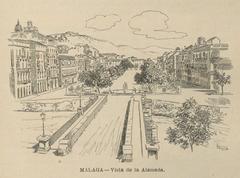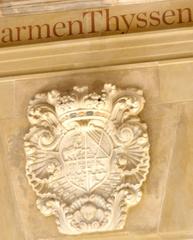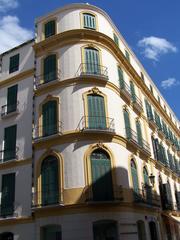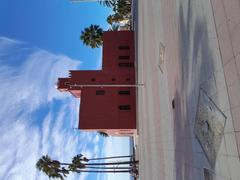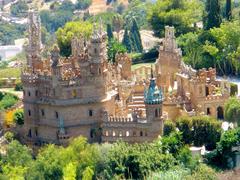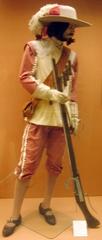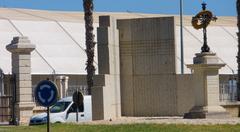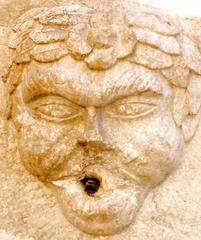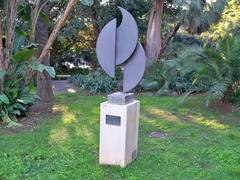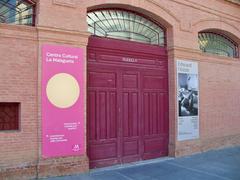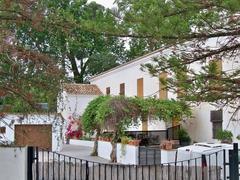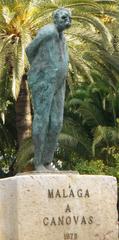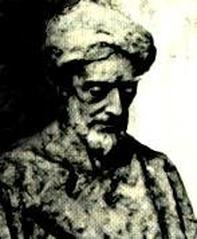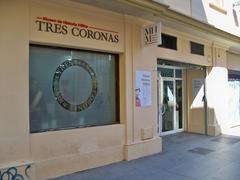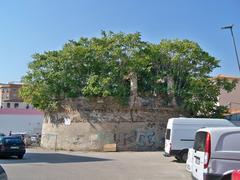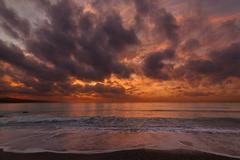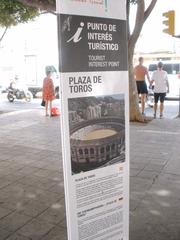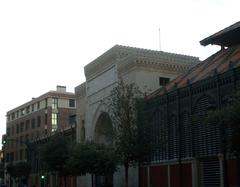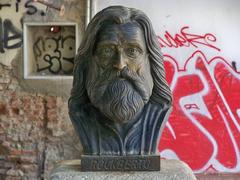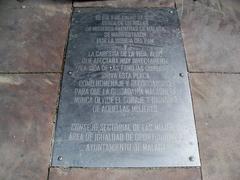
Visiting Calle Zurbarán in Málaga, Spain: Hours, Tickets, and Tips
Date: 24/07/2024
Why Visit Calle Zurbarán in Málaga
Calle Zurbarán, nestled in Málaga, Spain, offers an enchanting journey through history, art, and culture. Named after the illustrious Spanish painter Francisco de Zurbarán, this street is a testament to Málaga’s rich historical tapestry and vibrant modern-day charm. Francisco de Zurbarán, often referred to as the ‘Spanish Caravaggio,’ was a prominent figure during the Spanish Golden Age, known for his mastery of tenebrism and deeply emotional religious works (DailyArt Magazine). Málaga itself, one of the oldest cities in the world, boasts a history that spans approximately 2,800 years, influenced by various civilizations including the Phoenicians, Romans, Moors, and Christians (Wikipedia). Visitors to Calle Zurbarán can immerse themselves in this rich cultural heritage, exploring architectural marvels, artistic landmarks, and modern-day attractions that reflect the city’s dynamic spirit. From the Museo Carmen Thyssen Málaga, showcasing 19th-century Spanish paintings, to the bustling local cafes and tapas bars offering a taste of Andalusian cuisine, Calle Zurbarán provides a unique and comprehensive experience for all who visit.
What You Will Learn About Calle Zurbarán
- Introduction
- Historical Background
- Origins and Development
- Artistic Significance
- Decline and Legacy
- Calle Zurbarán’s Historical Context
- Cultural and Artistic Heritage
- Modern-Day Significance
- Visitor Information
- Visiting Hours
- Tickets
- Travel Tips
- Timing
- Accommodation
- Transportation
- Cultural Experiences
- FAQ
- Conclusion
Historical Background
Origins and Development
Calle Zurbarán in Málaga, Spain, is named after the renowned Spanish painter Francisco de Zurbarán, who was a prominent figure during the Spanish Golden Age. Born in 1598 in Fuente de Cantos, Extremadura, Zurbarán was sent to Seville in 1614 to apprentice under Pedro Díaz de Villanueva (DailyArt Magazine). His early years in Seville were formative, as he befriended Diego Velázquez, another luminary of Spanish art. Zurbarán’s career flourished in Seville, where he became the city’s official painter in 1629 (Spain Then and Now).
Artistic Significance
Zurbarán is often referred to as the “Spanish Caravaggio” due to his mastery of tenebrism, a style characterized by stark contrasts between light and dark (DailyArt Magazine). His works primarily focused on religious subjects, which were highly sought after by monastic patrons in southern Spain. His paintings, such as “The Crucified Christ with a Painter” and “Saint Francis in Meditation,” are celebrated for their emotional depth and meticulous detail (Metropolitan Museum of Art).
Decline and Legacy
Despite his early success, Zurbarán’s career faced challenges in the 1640s due to the socio-political turmoil in Seville, including unemployment, poverty, and a devastating plague in 1649 that halved the city’s population (DailyArt Magazine). In search of better opportunities, Zurbarán moved to Madrid in the 1650s, where he continued to work until his death in 1664. Although his popularity waned towards the end of his life, his contributions to Spanish Baroque art remain significant. Today, his works are displayed in prestigious institutions like the Museo del Prado in Madrid and the National Gallery in London (Spain Then and Now).
Calle Zurbarán’s Historical Context
Calle Zurbarán is situated in Málaga, a city with a rich historical tapestry that spans Roman, Arab, and Christian influences. Málaga’s strategic location on the Mediterranean coast made it a vital port city throughout history. The city’s historical significance is evident in its well-preserved Roman theater, the Alcazaba fortress, and the Gibralfaro Castle, which offer glimpses into its storied past (Anywhere We Roam).
Cultural and Artistic Heritage
Málaga has long been a cultural hub, attracting artists, writers, and intellectuals. The city is the birthplace of Pablo Picasso, and the Picasso Museum is one of its most visited attractions. The museum houses an extensive collection of Picasso’s works, providing insight into his creative process and artistic evolution (Guide to Malaga). The city’s vibrant arts scene is further enriched by numerous galleries, theaters, and cultural events, making it a dynamic destination for art lovers.
Modern-Day Significance
Today, Calle Zurbarán and its surrounding areas are a blend of historical charm and modern vibrancy. The street is part of Málaga’s historic center, which is characterized by narrow, winding streets, traditional Andalusian architecture, and bustling markets. Visitors can explore local shops, cafes, and restaurants that offer a taste of Málaga’s culinary delights, from fresh seafood to traditional tapas (Spanish Sabores).
Visitor Information
Visiting Hours
Calle Zurbarán is a public street and can be visited at any time. However, the best times to explore are during the day when the shops, cafes, and museums are open.
Tickets
There is no cost to visit Calle Zurbarán itself. However, ticket prices for nearby attractions such as the Picasso Museum or the Alcazaba fortress vary. It is advisable to check their official websites for the latest ticket prices and visiting hours.
Travel Tips
Timing
The best time to visit Málaga is during the spring (April to June) or fall (September to October) when the weather is pleasant, and the city is less crowded. July and August can be extremely hot, with temperatures averaging around 31 degrees Celsius (Visit Southern Spain).
Accommodation
Málaga offers a wide range of accommodation options, from budget-friendly hotels like Ibis Budget Hotel to boutique hotels such as Molina Lario, which is centrally located and provides easy access to the city’s main attractions (Spanish Sabores).
Transportation
The city is well-connected by public transportation, including buses and trains. Renting a car is also a convenient option for exploring the surrounding areas, such as the picturesque towns of Nerja and Frigiliana (Faraway Worlds). To organise your travel trip by train and discover other gems in Spain, you can use Trainline: Ruta por Andalucía
Cultural Experiences
Don’t miss the opportunity to experience an authentic flamenco performance, which is an integral part of Andalusian culture. Additionally, consider joining a walking tour to explore Málaga through the eyes of a local, offering deeper insights into the city’s history and culture (Faraway Worlds).
FAQ
Q: What are the visiting hours for Calle Zurbarán? A: Calle Zurbarán is a public street and can be visited at any time. However, the best times to explore are during the day when the shops, cafes, and museums are open.
Q: Are there any ticket costs to visit Calle Zurbarán? A: There is no cost to visit Calle Zurbarán itself. However, ticket prices for nearby attractions such as the Picasso Museum or the Alcazaba fortress vary.
Q: What is the best time to visit Málaga? A: The best time to visit Málaga is during the spring (April to June) or fall (September to October) when the weather is pleasant, and the city is less crowded.
Q: What are some recommended accommodations in Málaga? A: Málaga offers a wide range of accommodation options, from budget-friendly hotels like Ibis Budget Hotel to boutique hotels such as Molina Lario.
Q: What transport options are available in Málaga? A: The city is well-connected by public transportation, including buses and trains. Renting a car is also a convenient option for exploring the surrounding areas.
Conclusion
Calle Zurbarán in Málaga is more than just a street; it is a testament to the city’s rich cultural and historical heritage. Named after one of Spain’s greatest painters, the street and its surroundings offer a unique blend of historical landmarks, artistic treasures, and modern-day attractions. Whether you are an art enthusiast, a history buff, or simply looking to soak in the vibrant atmosphere of Málaga, Calle Zurbarán is a must-visit destination. For more travel tips and updates, be sure to download our mobile app Audiala, check out other related posts, or follow us on social media.
Sources and Further Reading
- DailyArt Magazine, 2023, Francisco de Zurbarán
- Spain Then and Now, 2023, Zurbarán (1598-1664): Brief Review of His Art and Biography
- Metropolitan Museum of Art, 2023, Zurbarán
- Anywhere We Roam, 2023, Things to Do in Málaga
- Guide to Málaga, 2023, Events in Málaga
- Spanish Sabores, 2023, The Ultimate Travel Guide to Málaga
- Visit Southern Spain, 2023, Málaga in July
- Faraway Worlds, 2023, What to Know Before You Visit Málaga, Spain
- Oh My Good Guide, 2023, Holy Week (Semana Santa) in Málaga
- Inside the Travel Lab, 2023, Málaga Travel Guide
- Vamos Spanish, 2023, A Journey Through Time: Discovering Málaga’s Historic Center
- Sunshine Seeker, 2023, Málaga Old Town
- The Planet D, 2023, Things to Do in Málaga
- España Guide, 2023, Things to Do in Málaga

